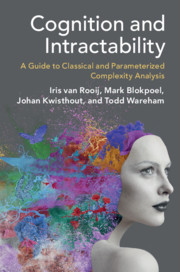Book contents
- Frontmatter
- Contents
- List of Figures
- List of Tables
- Preface
- Part I Introduction
- Part II Concepts and Techniques
- 2 Polynomial versus Exponential Time
- 3 Polynomial-Time Reductions
- 4 Classical Complexity Classes
- 5 Fixed-Parameter Tractable Time
- 6 Parameterized Reductions
- 7 Parameterized Complexity Classes
- Part III Reflections and Elaborations
- Part IV Applications
- Appendix A Mathematical Background
- Appendix B List of Computational Problems
- Appendix C Compendium of Complexity Results
- References
- Index
6 - Parameterized Reductions
from Part II - Concepts and Techniques
Published online by Cambridge University Press: 18 April 2019
- Frontmatter
- Contents
- List of Figures
- List of Tables
- Preface
- Part I Introduction
- Part II Concepts and Techniques
- 2 Polynomial versus Exponential Time
- 3 Polynomial-Time Reductions
- 4 Classical Complexity Classes
- 5 Fixed-Parameter Tractable Time
- 6 Parameterized Reductions
- 7 Parameterized Complexity Classes
- Part III Reflections and Elaborations
- Part IV Applications
- Appendix A Mathematical Background
- Appendix B List of Computational Problems
- Appendix C Compendium of Complexity Results
- References
- Index
Summary
In this chapter we introduce the notion of parameterized reductions. We explain how this technique can be used to transform an input for a parameterized problem $K$-$A$ into an input or parameterized problem $K$-$B$, mapping yes-instances for $K$-$A$ to yes-instances for $K$-$B$ and vice versa. If this transformation can be done in fixed-parameter tractable time, this implies that if $K$-$B$ is fixed-parameter-tractable, then so is $K$-$A$; conversely, if $K$-$A$ is not fixed-parameter tractable, then neither is $K$-$B$. Like the polynomial-time reductions introduced in Chapter 3, parameterized reductions are a powerful technique for relating problems to each other. We will demonstrate parameterized analogues of each of the reduction strategies described in Chapter 3. We also include several exercises for practicing this technique.
Information
- Type
- Chapter
- Information
- Cognition and IntractabilityA Guide to Classical and Parameterized Complexity Analysis, pp. 128 - 147Publisher: Cambridge University PressPrint publication year: 2019
